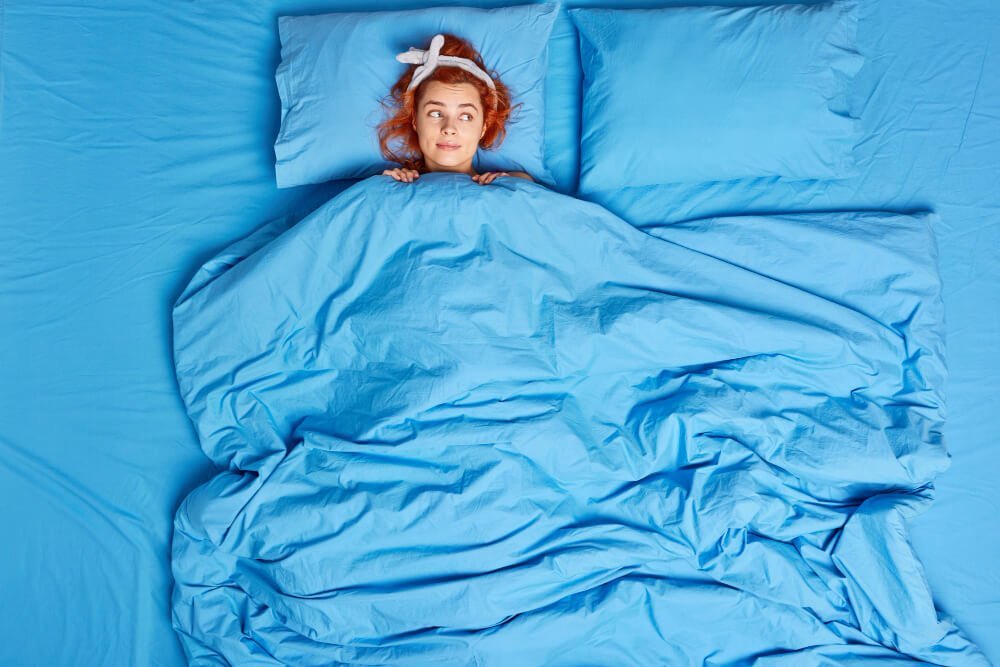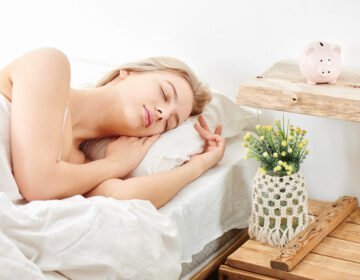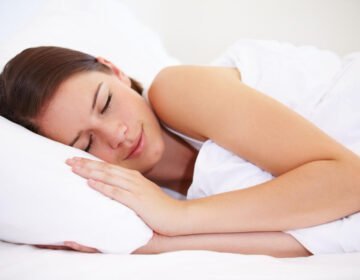
Exploring Different Sleeping Positions: Finding the Best One for You
A good night’s sleep is important to our health. How we sleep can affect how well we sleep a lot. Some illnesses might get better or worse based on how you sleep. We will talk about “Exploring Different Sleeping Positions: Finding the Best One for You” in this post. There are pros and cons to sleeping on your back, side, stomach, or a mix of all four. By learning about each sleeping position and making decisions based on what you know, you can get a better night’s sleep and wake up feeling better.
By the end of this blog post, you’ll know more about the different sleeping positions and how to choose the best one for you. Remember that you can get a restful and easy night’s sleep. So let’s look at the different ways people sleep and find out how to get a better night’s rest.
The Back Sleepers
Side sleeping is a popular way to sleep. In this position, a person lies on their side with their legs and torso in a horizontal line. The fetal position and the log position are the two main ways to sleep on your side. In the fetal position, the sleeper’s knees are bent and their legs are curled toward their chest, like a baby in the womb. In the log position, the sleeper’s legs and body are straight and parallel, making them look like a log.
Benefits of side sleeping:
Reduced snoring: Side sleeping can help alleviate snoring and improve breathing during sleep. By keeping the airways open, it can reduce the likelihood of snoring and symptoms associated with sleep apnea.
Spinal alignment: Side sleeping can promote proper spinal alignment, as the natural curvature of the spine is maintained when lying on the side. This can help alleviate or prevent back and neck pain.
Reduced acid reflux: Side sleeping, particularly on the left side, can help reduce acid reflux symptoms. By positioning the stomach below the esophagus, it helps prevent stomach acid from flowing back up into the esophagus.
Improved digestion: Side sleeping can aid digestion by facilitating the movement of food through the digestive tract, as it allows for better alignment of the stomach and intestines.
Reduced risk of snoring during pregnancy: Side sleeping, especially on the left side, is often recommended for pregnant women to enhance blood circulation to the placenta and reduce the risk of snoring and sleep disturbances.
Potential drawbacks of side sleeping:
Shoulder and hip pain: Side sleeping can sometimes lead to discomfort or pain in the shoulder or hip on the side that bears the body’s weight. This can occur if the mattress or pillow does not provide adequate support.
Wrinkles: Sleeping on one side consistently can contribute to the formation of facial wrinkles over time, as the skin is pressed against the pillow or mattress.
Numbness or tingling: In some cases, side sleeping can cause temporary numbness or tingling in the arm that is underneath the body, especially if the sleeper’s weight compresses the nerves.
Tips for maintaining proper alignment and support for side sleepers:
Choose a suitable mattress: Opt for a medium-firm mattress that provides enough support to keep your spine aligned while also cushioning pressure points, such as the shoulders and hips.
Use a supportive pillow: Select a pillow that adequately supports your head and neck, keeping them aligned with the spine. Look for a pillow with sufficient loft to fill the gap between your ear and shoulder.
Place a pillow between your knees: Placing a pillow between your knees can help maintain proper spinal alignment and reduce strain on the hips and lower back.
Avoid curling too tightly: While side sleeping, try to avoid curling into an excessively tight fetal position, as it can strain your neck and spine. Instead, aim for a relaxed position with a slight bend in your knees and arms.
Remember that everyone’s sleep preferences and comfort levels can vary, so it’s important to find the sleeping position, mattress, and pillows that work best for you individually.
The Stomach Sleepers
Stomach sleeping, also known as prone sleeping, is a sleep position where an individual lies on their stomach with their face turned to the side or directly facing downwards. It is one of the less common sleep positions.
Benefits of stomach sleeping:
Reduced snoring: Stomach sleeping can help alleviate snoring for some individuals by keeping the airways open and allowing for better airflow.
Reduce sleep apnea symptoms: In certain cases, this sleeping may help alleviate symptoms of obstructive sleep apnea by minimizing airway obstruction.
Less risk of back pain: This sleeping position can provide relief for individuals with certain types of back pain, particularly those who have herniated discs or spinal stenosis. This position may help alleviate pressure on the spinal discs.
Reduced snoring during pregnancy: Stomach sleeping, specifically during the later stages of pregnancy, may help alleviate snoring and sleep disturbances for some pregnant women.
Potential drawbacks of stomach sleeping:
Neck and back strain: Stomach sleeping can strain the neck and spine, as it requires the head to be turned to the side for breathing. This position can lead to discomfort or pain in the neck, upper back, or lower back.
Increased risk of wrinkles: Sleeping with the face pressed against the pillow can contribute to the formation of facial wrinkles over time, as well as potentially causing puffiness or fluid retention in the face.
Potential strain on the organs: Stomach sleeping may place pressure on the organs, potentially affecting digestion and leading to discomfort or reflux for some individuals.
Difficulty maintaining a neutral spine: Maintaining proper spinal alignment while sleeping on the stomach can be challenging. The natural curves of the spine may be compromised, leading to potential discomfort or pain.
Tips for maintaining proper alignment and support for stomach sleepers:
Choose a suitable mattress: Opt for a medium-firm mattress that provides enough support to keep your spine aligned while also cushioning pressure points.
Use a thin pillow or no pillow: To minimize strain on the neck and spine, consider sleeping without a pillow or using a thin, flat pillow. This helps maintain a more neutral position for the head and neck.
Place a pillow under the pelvis: Placing a small pillow or a rolled-up towel under the pelvis can help maintain better spinal alignment for some stomach sleepers.
Experiment with variations: If you find it uncomfortable to fully sleep on your stomach, you can try sleeping at an angle by placing a pillow under your hips to reduce strain on your lower back.
It’s important to note that stomach sleeping may not be suitable for everyone, and individual preferences and comfort levels can vary. If you have chronic pain, respiratory conditions, or other health concerns, it is advisable to consult with a healthcare professional for personalized guidance on the best sleep position for you.
The Combination Sleepers
Combination sleepers are individuals who frequently change their sleep positions throughout the night. They may start the night sleeping on their back, then transition to their side, and perhaps end up on their stomach. Combination sleepers often shift positions multiple times during a single sleep session.
Benefits of being a combination sleeper:
Reduced pressure points: Changing sleep positions regularly can help distribute the pressure on different parts of the body, reducing the risk of developing discomfort or pain in specific areas.
Enhanced circulation: Variety in sleep positions promotes healthy blood circulation by alleviating prolonged pressure on certain body regions, allowing for better oxygenation and nutrient delivery.
Potential relief for sleep apnea: Combination sleepers may find that changing positions helps alleviate symptoms of sleep apnea by reducing airway obstruction in specific sleep positions.
Flexibility and adaptability: Combination sleepers tend to have a more flexible approach to sleep, which can make it easier for them to find a comfortable position that suits their individual needs.
Potential challenges for combination sleepers:
Disruption of sleep quality: Frequent position changes can disrupt the sleep cycle and may lead to fragmented sleep, affecting overall sleep quality.
Pillow and mattress adjustments: Combination sleepers may need to make regular adjustments to their pillows and mattresses to accommodate different sleep positions, ensuring adequate support and comfort.
Finding the right sleep accessories: Combination sleepers may need to experiment with different pillows, mattress types, or sleep aids to find the best combination that supports their varying sleep positions.
Tips for combination sleepers:
Invest in a versatile mattress: Opt for a mattress that provides a balance of support and comfort across various sleep positions, accommodating the body’s different needs as you change positions.
Use adjustable pillows: Consider using adjustable pillows that can be customized to provide proper support in different sleep positions. This allows you to adapt the loft and firmness of the pillow as needed.
Support your body with pillows or cushions: Place additional pillows or cushions strategically to support different areas of your body during different sleep positions. For example, using a body pillow can help align the spine when sleeping on your side.
Maintain a sleep schedule: Establishing a consistent sleep schedule can help regulate your body’s internal clock, allowing for smoother transitions between sleep positions and potentially improving sleep quality.
Remember that finding the right combination of mattress, pillows, and sleep accessories may require some experimentation and personal preference. It’s important to prioritize your comfort and sleep quality as a combination sleeper.
Addressing Specific Sleep Concerns
Getting quality sleep is essential for overall well-being and productivity. However, various sleep concerns can disrupt the sleep routine and affect our daily lives. Here are some common sleep concerns and strategies to address them:
Insomnia: Insomnia is characterized by difficulty falling asleep, staying asleep, or waking up too early. To address insomnia:
- Establish a consistent sleep schedule, going to bed and waking up at the same time every day.
- Create a relaxing bedtime routine to signal your body that it’s time to sleep. This can include activities such as reading, taking a warm bath, or practicing relaxation techniques.
- Create a sleep-friendly environment by keeping your bedroom cool, dark, and quiet.
Sleep Apnea: Sleep apnea is a sleep disorder characterized by pauses in breathing during sleep. If you suspect you have sleep apnea:
- Consult a healthcare professional who can diagnose and recommend appropriate treatment options.
- Consider lifestyle changes such as maintaining a healthy weight, regular exercise, and avoiding alcohol and sedatives before bed.
- Use a continuous positive airway pressure (CPAP) machine or other devices prescribed by your healthcare professional to help keep your airways open during sleep.
Restless Leg Syndrome (RLS): RLS is a condition characterized by an uncontrollable urge to move the legs, often causing discomfort and disrupting sleep. To manage RLS:
- Establish a regular sleep schedule and practice good sleep hygiene.
- Engage in regular physical activity, which can help reduce symptoms.
- Avoid caffeine and alcohol as they can exacerbate RLS symptoms.
When it comes to sleep, personal preference and comfort play a significant role in ensuring a restful night. Each individual has unique preferences and comfort levels that contribute to their overall sleep quality. Here are some factors to consider for personalizing your sleep environment and promoting comfort:
Mattress Selection
Choosing the right mattress is crucial for optimal comfort during sleep. Consider factors such as mattress firmness, material, and support. Some prefer a firmer mattress for better back support, while others find a softer mattress more comfortable. Test different options to determine what suits your personal preference.
Pillow Selection
Pillows provide essential support for the head, neck, and spine. Consider factors like pillow loft, firmness, and material. Side sleepers may prefer a thicker, firmer pillow, while back or stomach sleepers may opt for a thinner, softer one. Experiment with different pillow types to find what provides the best support and comfort for you.
Bedding and Sheets
Choosing bedding and sheets that feel comfortable against your skin can enhance your sleep experience. Some people prefer soft and breathable materials like cotton or bamboo, while others may prefer warmer or cooler options based on personal temperature preferences.
Temperature and Climate Control
Creating a sleep environment with a comfortable temperature is essential. Experiment with room temperature, blankets, and clothing to find what helps you maintain a comfortable sleep temperature. Some individuals may prefer a cooler room, while others may find warmth more soothing.
Conclusion
In conclusion, understanding and addressing specific sleep concerns, as well as considering personal preference and comfort, are essential for promoting a restful night’s sleep. Whether you’re dealing with insomnia, sleep apnea, restless leg syndrome, shift work sleep disorder, anxiety, or stress, seeking appropriate guidance and implementing strategies can help improve sleep quality.
By following sleep hygiene practices, creating a sleep-friendly environment, and making adjustments based on personal preferences. Remember, everyone’s sleep needs and preferences are unique. It’s important to listen to your body, experiment with different strategies, and consult with healthcare professionals when needed to address specific sleep concerns. Prioritizing sleep and taking steps to optimize personal comfort can lead to more restful nights, increased daytime productivity, and improved overall well-being.















